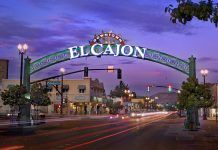There are many special districts in the county like water districts, fire district, the U.S. Fish and Wildlife, but Resource Conservation Districts were created to protect and conserve natural resources. RCDs were originally created in the early 1940s to combat the devastation of the dust bowl crises of the 1930s where crops began to fail with the onset of drought, exposing bare, over-plowed farmland, where the eroding soil led to massive dust storms and economic ruin.
There are 93 RCDs in California, and three in San Diego, with the RCD of Greater San Diego County, headquartered in Lakeside, being the largest. Through its many programs, it works to provide education, information and technology assistance to help in local conservation efforts. Its reach extends north to Bonsall, to the Pacific Ocean, out to the Imperial County line, and the United States-Mexico border. The geography of its service consists of more than 30 types of vegetative communities and encompasses mountains, deserts, forest, coastal resources, watershed with streams, rivers, sloughs, lakes, beaches, bays, and urban, agricultural and suburban areas.
Educational Coordinator Sierra Reiss said RCD gets much of its funding from local, state, and federal grants used to teach people about wildfires, clearing brush around homes, fire prevention, farming and more.
“We have educational programs where we teach students about watersheds, how to be conscience of the environment,” she said. “We have a couple of community gardens and farms where we allow people to grow their own produce and teach them sustainable gardening. Most of these programs have specific grants associated with them. Like our watershed education program is funded through the Port of San Diego, and we have guidelines for our programs like where we teach a course, and what age group we are teaching.”
Reiss said it has internships for college students, volunteer days, and education is a top priority in its list of programs.
“SLEWS, Student, Landowner, Education and Watershed Stewardship, we teach students about conservation, taking them to a certain location where they do environmental conservation practices, and they come back once a month for three months to see the progress of their work,” she said. “For that program we have certain mentors so that they can learn about conservation practices, certain jobs in that field. Many students want to go into something environmental conservation based, but do not know what opportunities there are, so our mentors teach them about their job and how they go to that place in their career.”
Reiss said it has a Community Supported Agriculture program at Wild Willow Farm tucked away in South San Diego between Chula Vista and Imperial Beach. The 3.3 million population of San Diego includes the largest number of small farms in America. It is also the fifth highest populated county and the 19th largest agricultural economy in the U.S.
Farm Manager Gregg Cady, Wild Willow Farm & Education Center director said part of RCD’s mission is on the agricultural side and has operated Wild Willow Farm for the past two years. It is the most southwest farm in the U.S. and exist as a nonprofit educational community farm.
“We teach people about farming, regenerative farming, building the soil and taking care of the biology and ecology with a natural system that helps sequester carbon and provides other environmental benefits,” said Cady.
Cady said Wild Willow is a working farm that sells its products through its Community Supported Agriculture program, where people purchase shares, and providing them with weekly or bi-weekly vegetable boxes.
For more information about the programs at Wild Willow Farm & Education Center visit www.wildwillowfarm.org. For more information on how to get involved in the many programs and opportunities that RCD of Greater San Diego County, visit www.rcdsandiego.org.














